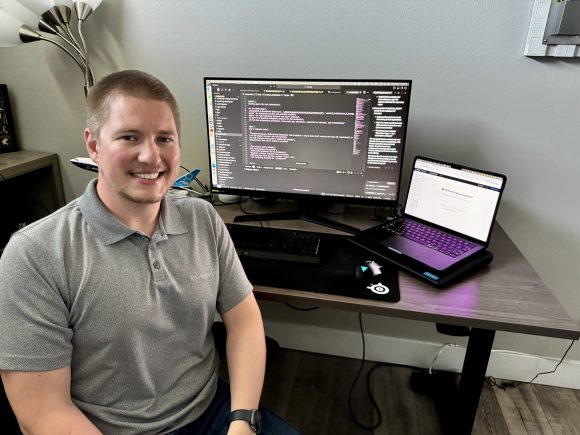Lately, I’ve been kind of on an AI bender using chatbots like ChatGPT and Claude daily. Whether I like it or not, AI is transforming the way I write, the way I search the Internet, maybe even the way I think.
My guest on today’s show, Riley Hutchinson, is bringing that transformation into CNC machine shops.
He is co-founder of Swarf AI, an AI copilot built specifically to fill the tribal knowledge gap that retiring skilled workers are leaving.
You might not be using it much right now, but after hearing this interview you’ll understand why AI will likely be embraced in your shop soon.
Listen on your favorite podcast app using pod.link.
View the podcast at the bottom of this post or on our YouTube Channel
Facebook: https://www.facebook.com/swarfcast
Instagram: https://www.instagram.com/swarfcast/
LinkedIn: https://www.linkedin.com/company/todays-machining-world
Twitter: https://twitter.com/tmwswarfblog
*************
Link to Graff-Pinkert’s Acquisitions and Sales promotion!
*************
Interview Highlights
I first connected with Riley after I posted a poll on LinkedIn, asking people how they were using AI in their machine shops. (I used ChatGPT to assist me in coming up with the poll, by the way). Riley replied almost immediately, and I soon realized he wasn’t just using AI. He was building something truly groundbreaking—something specifically created for the machining world. Swarf isn’t just a chatbot for machinists; it’s a purpose-built assistant that understands the machines, tools, and workflows of a specific shop. It helps programmers and machinists get expert answers fast—on everything from feeds and speeds to tool recommendations and order of operations.
Riley spent much of his career as a CNC programmer at Boeing, where he witnessed how much of the industry’s critical knowledge is passed down informally—and how quickly it can disappear when experienced workers retire. Swarf AI is his attempt to capture that tribal knowledge, preserve it, and make it accessible to everyone in the shop. It’s trained not only on public technical documents like Heidenhain manuals, but also on the internal habits and preferences of a specific shop. The result is a tool that feels less like a generic assistant and more like your best shop floor mentor, available 24/7.
We talked about the deeper implications of this kind of technology. Will it replace people? Riley doesn’t think so. He believes it will empower shops to take on more work, reduce wasted time, and make younger or less experienced programmers more effective, faster.
This conversation hit home for me. I’ve been using AI daily to write, brainstorm, and solve problems. But I’ve also had a lingering skepticism—am I relying on it too much? Is it making my brain sharper, or weaker? Talking with Riley helped clarify that what matters most isn’t whether you use AI, but how you use it. Are you using it to cut corners, or to deepen your understanding and expand your capabilities?
Whether you’re deep in the world of CNC machining or just curious about how AI is going to change the way we work, this episode offers a fascinating and grounded look at the future. And honestly, it made me even more excited about where this is all heading.
Question: What’s one piece of shop knowledge you wish you could bottle up before someone retires?
This blog was assisted using ai.
Podcast: Play in new window | Download




4 Comments
I wish the talent of looking at a part, seeing in our minds eye how to make it on a mechanical machine was easier to share. Understanding the forces involved, the dynamics of how the machine absorbs the forces, how to know “what matters, what is does not matter-even if it looks like it does” there is so much behind the scenes that make these machines successful or not. Putting together a involved setup with many unseen details all aligned and watching the machine click along smoothly is fascinating, rewarding. Hard to know how to teach the skill… Each individual step is sort of straight forward, but it is all dependent on understanding the whole picture. …
Yes. That’s the tribal knowledge that is being lost.
Well, I guess that’s the feedback for Riley.
The way AI could work is if you were really good at articulating a description for it to synthesize. And before long it will be able to sense characteristics of a part optically and through feel.
Do you think that “whole picture” concept could be taught quickly with the help of AI? I think when people try it, they see the possibilities.
Id like to know what your costing will be like. I am contemplating Cam Assist to help my programmers. What do you think
Great question, Keith!
I suggest you look up Riley on LinkedIn and you reach him directly!